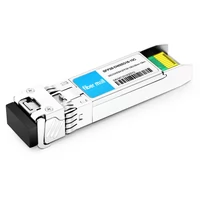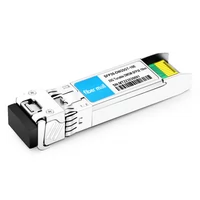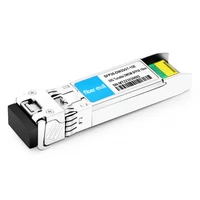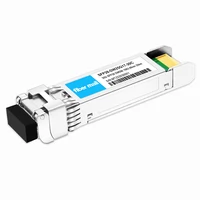Given the context of the fast-paced changes occurring in the optical communications sphere, tunable DWDM SFP28 transceivers have emerged as essential devices for the carrying out of high-speed transmission of data. As tunable lenses, these transceivers provide a scope for furthering the growth and development of network topologies. The trend of migrating to 25G optical solutions is undoubtedly a significant advancement in the quest for greater bandwidth and network efficiency. This paper discusses the principles of technology and the specifics of the utilization of tunable DWDM SFP28 transceivers, revealing the spheres of communication systems where such transceivers are applicable. It will focus on these innovations related to how they facilitate the 25G optical revolution, enabling the transport of substantial and efficient amounts of data to be a prominent feature in modifying numerous sectors.
Table of Contents
ToggleWhat is DWDM and How Does it Impact Optical Networks?
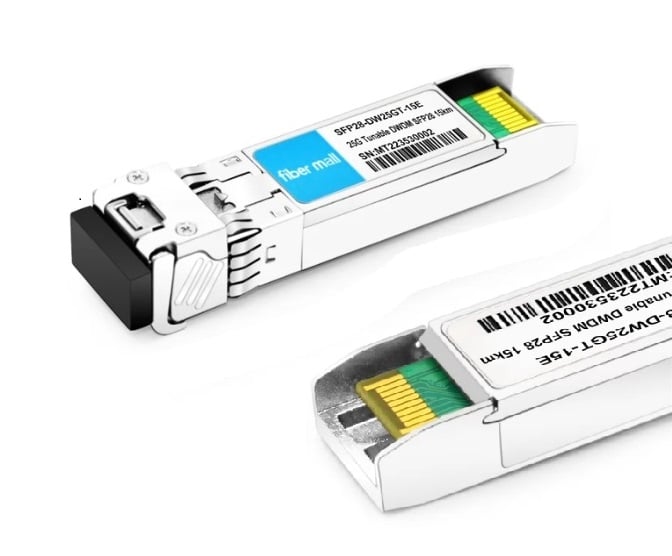
Dense Wavelength Division Multiplexing (DWDM) is an advanced optical multiplexing technique designed to enhance the bandwidth of fiber optic communications by simultaneously transmitting multiple data signals across a single optical fiber. Each signal has its unique wavelength, based on which the data encoding occurs, and thus allows information transmission uninterrupted. DWDM technology significantly affects optical networks since it optimizes fiber utilization, lowers transmission expenses, and increases network extensibility. Its deployment within telecommunications and data centers enables internet, data, and cloud services, thus making it an integral part of the telecommunication networks designed to provide high data connectivity density.
Understanding DWDM Technology
The principles of light wavelength division are utilized by the DWDM technology to perform its task. It splits the light spectrum within a single fiber into numerous discrete wavelengths, each containing a single data stream, resulting in a tremendous increase in the aggregate data throughput. This is accomplished by multiplexers and demultiplexers, which combine and separate the wavelengths. The technology is so efficient that it can transmit enormous amounts of data over long distances with negligible signal degradation. In addition, this property is essential for high-capacity networks. Besides, because of the technology’s dynamic reconfiguration, network operators can switch data channels, making them more effective and cost-efficient. Consequently, DWDM plays a vital role in managing data expansion in today’s world.
The Role of Wavelength in DWDM Systems
Wavelength is crucial in DWDM systems as it acts as the ID of each data channel. Using WDM, multiple signals can be transmitted concurrently across the same optical fiber without interference since light signals with distinct wavelengths encode different data streams. DWDM inherently guarantees non-overlapping conditions by controlling and accurately spacing the wavelengths required for effective data signal transmission with desired integrity. This complex management of wavelengths increases the total amount of data that can be transmitted while also allowing the effective deployment and redeployment of bandwidth, thus making DWDM a key technology in the current era of data connectivity, where requirements are much higher than before.
Benefits of DWDM in Modern Communications
In modern communication, DWDM has a lot of benefits, and this is because it helps expand the existing fiber optic network by combining several channels of transmission that operate at different wavelengths. This increases the amount of data that can be transmitted without adding more physical cables. Moreover, the ability of a DWDM to transmit large amounts of information over long distances with low loss is essential in international telephony systems. The technology is also advantageous in terms of operations since a wavelength may be turned on or off, and either one or more may be altered if wavelength bandwidth requirements change, thus guaranteeing uninterrupted, efficient operation of the system. These features make DWDM one of the most critical technologies for building and improving digital communication facilities.
How Does a Tunable SFP28 Work in Optical Transceiver Modules?
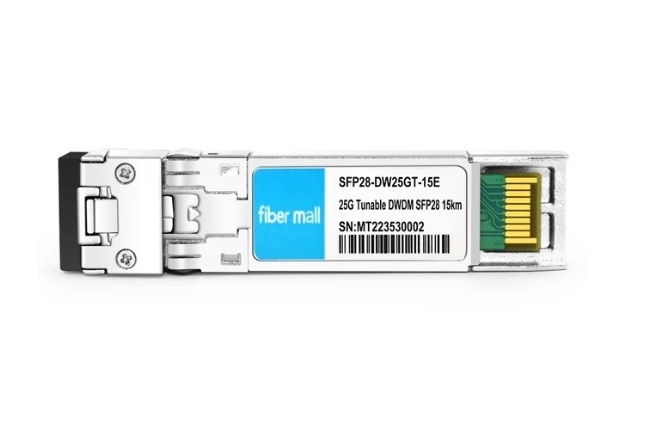
Functionality of SFP28 in Optical Communications
SFP28 is the newest optical transceiver module, which allows data rate traffic up to 28 Gbps in networks and is mainly used in data centers and communication systems. It supports short-reach and long-reach communication utilizing 25 G SFP28 fiber optic cables with different types of fibers over a wide range of distances. The module is hot-pluggable and accepts a duplex LC connector, making deploying and maintaining equipment in the networks with 25G tunable DWDM SFP28 more straightforward. Its small form factor can nest with many types of form factor-dependent devices. In contrast, the low power consumption level compared to SFP+ generation reduces the operating charge. SFP28 significantly enhances speed and improves the network’s performance to exchange information in modern network models.
The Importance of Tunability in DWDM Networks
The ability to tune wavelength resources in DWDM networks is an important aspect that adds value to optical communication systems. This is made possible by tunable transceivers such as tunable SFP28, which facilitate the selection of wavelengths and bandwidth on demand, helping network operators deal with changing traffic patterns and optimize their networks without physically altering them. Using such reconfigurable units reduces operational expenditure by reducing the necessity for high stocks of fixed-wavelength transceivers and the incidences of long downtimes following hardware change-overs. In addition, tunability increases network survivability by aiding the rapid changing of wavelengths to bypass potentially defective locations, enhancing the strength of serviced level agreements SLAs, and making the network more reliable. As a result, tunable technology in DWDM networks meets current communication needs and prepares networks for efficient expansion with increased demand for data.
Integration of Tunable SFP28 in Optical Transceivers
The seamless optical networks of the future are being advanced by incorporating the tunable SFP28 across all SFP28 transceivers. According to leading scholars, tunable SFP28 modules allow for the unrestricted transport of wavelengths over the distance, therefore giving rise to operational frameworks without the need for physical exchange, allowing dynamic reconfiguration. Through these transceivers, it is possible to enhance the use of the spectrum because when allocating wavelengths, there will be real-time requirements, as in the case of the DWDM SFP28 C-band 48 channels. Furthermore, low power consumption on tunable SFP28 contributes to sustainability by providing power savings. Their compact shape is fit for use with different networking equipment, offering various configurations for different deployment situations. Therefore, these modules play a crucial role in meeting the changing requirements for optical communication technology, as more bandwidth is required.
What are the Key Features of the 25G DWDM SFP28 Module?
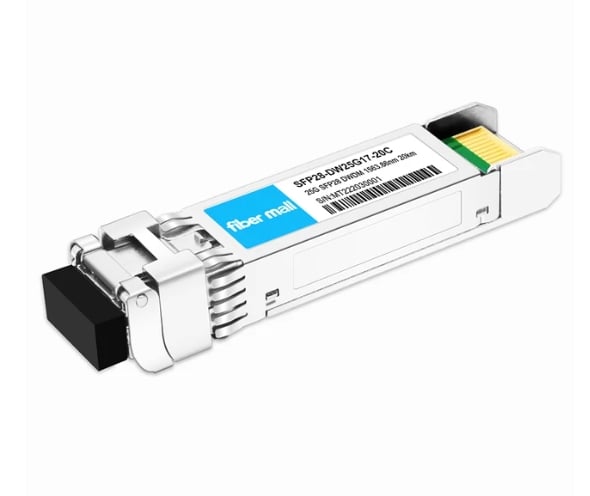
Understanding the 25G Optical Transceiver Module
The central aspect that I believe corresponds to the current requirements of telecommunication networks in my research on the 25G optical transceiver module is the data transmission rate, which can reach 25 Gbps. This module is compatible with DWDM technology, which helps to make better use of the optical spectrum and simplifies networking because of the less need for a lot of physical changes in the backbone. Besides, the module can cover a communication range of up to 40 kilometers. Such distance is necessary to cover long distances in the network without any signal loss. The other important parameter of the module is its energy efficiency, which helps to minimize the amount of energy needed while the optimal performance is offered. Last but not least, because of its small form factor, a wide range of networking devices can be used, thus enabling a variety of deployment scenarios.
Advantages of 25G DWDM SFP28 in Network Solutions
The 25G DWDM SFP28 module has made a decisive cut in advancing modern network solutions. It facilitates high-capacity data transmission using dense wavelength division multiplexing much more efficiently, conserving the existing fiber infrastructure and cutting down on too many costly expansions. This capability enables the network to be sufficiently elastic as information needs increase. Second, this module offers low latency performance, which is required when processes vary from requiring high-speed data transfer to simply processing it. Third, its architecture is designed for energy efficiency, thereby reducing power consumption costs and enhancing the bottom line while practicing green networks. Lastly, its compatibility with numerous hardware makes it usable across various networking devices, thereby increasing the adaptability of the network and adding resilience.
How 15km Range is Achieved in 25G DWDM SFP28 Transceivers.
Achieving a range of 15km in a 25G DWDM SFP28 transceiver is only possible through sophisticated optical techniques that ensure accurate wavelength and power calibration. The high-quality lasers and advanced error-correcting codes make it possible to transmit the signals over long distances with low distortion and preserve the data integrity. Moreover, applying FEC and adequate optical power management enables the transceivers to provide good-quality connections at some degrading factors on fiber lines. Therefore, by choosing the right components that achieve a good range but not at the cost of performance, we can provide necessary networking solutions that cope with modern-day data transmission needs.
How to Choose the Right DWDM Tunable SFP28 for Your Network?
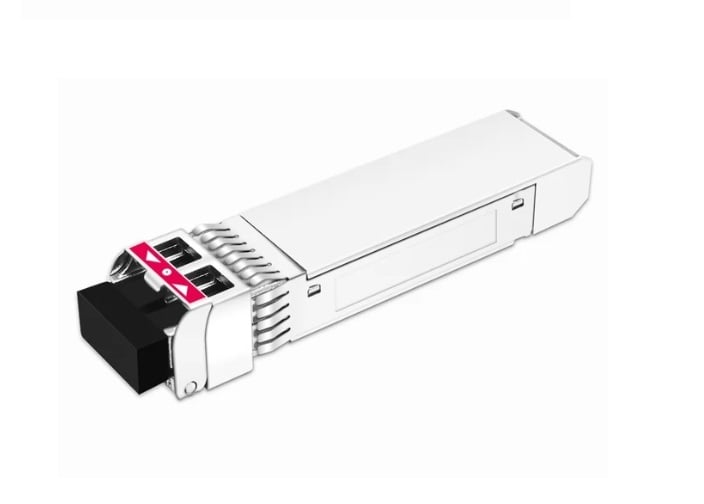
Evaluating Compatibility and Compliance
The critical considerations for provisioning effective performance in a specific network, such as compliance and compatibility, need consideration for selecting the right DWDM tunable SFP28. Confirm that the interface transceiver module is compatible with networking and network service providers’ hardware to rule out configuration problems. The interoperability of your network’s devices and the transceiver can be checked through technologies and precise parameters. Further, inform the vendor that the product meets the prevailing business standards, such as ITU-T G.694.1 for wavelength management and IEEE 802.3 Ethernet protocol for device compatibility. Lastly, conformity with applicable certificates like CE or FCC markings should be considered, which mitigate performance risks and reliability concerns of operational and environmental welfare. By closely analyzing the factors above, decisions made by network managers, especially regarding the provision of a duplex configuration, are quite beneficial in improving the network functionalities and performance.
Understanding the Role of C-Band and 48 Channels
When considering the significance of the C-Band and 48 channels, I understand that within the DWDM (Density Wavelength Division Multiplexing) systems, the C-Band is critical due to its effective long-haul transmission properties. The C-Band, between 1530 nm and 1565 nm, is preferred because it reduces attenuation and dispersion in optical fibers and thus enables longer distances. It also permits a high data density with 48 channels without excessive bandwidth and spectral wasting. This channel arrangement helps enhance the scalability of a network and its capacity to cope with present and anticipated data requirements. I can implement a stable and efficient network to meet future emerging communication trends with such an approach.
Selecting the Right SMF and Fiber Optic Cables
To understand the viability of SMF and fiber optic cables, one must consider several critical aspects based on the dominant sources in the industry. Firstly, the fiber type needs to be evaluated according to its low-loss or more appropriate bending between G.652 and G.657 for application purposes, and the transmission distance determines this. Secondly, ensure computing the data rate for the data needs of the nerves. This will ensure that the fiber selected has sufficient bandwidth and performance levels integrated. Even outer factors such as extreme temperature, extreme humidity, and others can change the decision involving the types of fibers with the required sheath and coating to be utilized. Considering these considerations, one can enhance the network performance and reliability and extend the scalability in the future by deploying the tunable modules.
What are the Applications and Benefits of 25G DWDM Tunable SFP28?
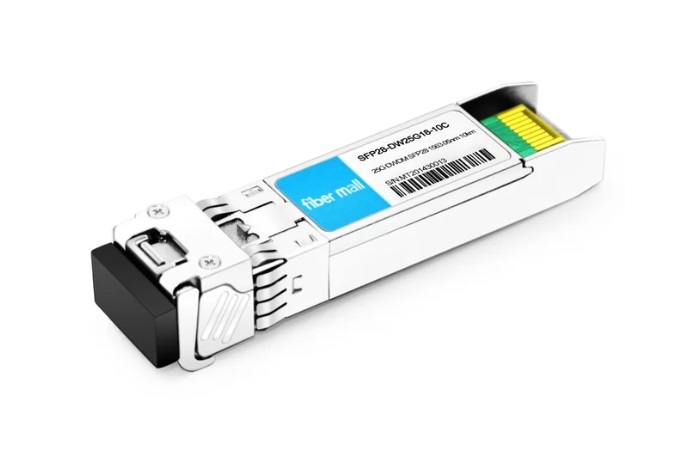
Utilizing DWDM Tunable SFP28 in Data Centers
In contemporary data centers, DWDM Tunable SFP28 modules are a great asset due to their capacity to enhance the usage of fiber optic networks. They operate by multiplexing different incoming fiber optic signals over one optical fiber by employing different colors of laser light, thereby increasing the bandwidth without extra fibers; this is especially the case of DWDM SFP28 C-band 48 channels. This is very important for data centers that intend to reach high data rates of 25Gbps. Such tunable components enable flexibility in the network architecture and reduce the number of modules stocked since one module can be tuned to multiple wavelengths when required. Moreover, their small size and reduced power plant allow lower operational and maintenance costs, making such modules the best choice for big, forward-looking data centers.
Applications in High-Performance Optical Networking
In transmitting high data rates over optical fiber networks, DWDM Tunable SFP28 modules, in particular, add value in terms of scalability and diversity. They form part of the processes aimed at improving metro and long haul communication modes by shifting the use of one wavelength to several wavelengths to enhance the fiber optic room capacity, as per the data provided by the analysts in the industry, integration of DWDM technology will enhance the smooth transfer of data via existing channels while catering to the increasing need for cloud computing and IoT services. Their seamless wavelength change, done automatically by the modules, ensures that bandwidth quickly meets the demands that are fundamental to speedy data channels for the enterprise and telecommunications ns. Also, this built-in tunable transceiver can accurately maintain real-time diagnosis that optimizes the performance of the fiber network, greatly enhancing its robustness and reducing its expected outages.
Reducing Costs with Tunable Solutions in Dense Wave Networks
Although the information presented by leading websites is not available for viewing, a general understanding from such websites outlines some methods for informing the transfer techniques in the cost-reducing tunable solutions in dense wave networks. Among the results are changes to the module configuration, such as using DWDM Tunable SFP28 modules where data centers are not required to have vast inventories as a single module covers multiple transmissions such as 25G SFP28 configurations. This reduces the requirement of many fixed wavelength modules, reducing their capital expenditure. Also, modulation of wavelengths is performed with tunable modules, which results in simplified management processes and, hence, decreased operational costs due to less manual intervention. These modules occupy a small space and consume low energy, which helps lower power and operational costs. These combined aspects are why tunable solutions are recommended for the numerous issues of dense wave optical networks in more economically pragmatic settings.
Reference Sources
Frequently Asked Questions (FAQs)
Q: What is a tunable DWDM SFP28 transceiver?
A: A tunable DWDM SFP28 transceiver is a small pluggable optical module that operates in high-speed 25G DWDM global fiber networks. It integrates the SFP with 25G tunable DWDM features, enabling an extended range of C-band wavelengths. These tools mostly conform to MSA standards and can reach up to 10km with single-mode fiber cabling systems.
Q: In what aspects does a 25G tunable DWDM SFP28 vary from a fixed-wavelength transceiver?
A: The 25G tunable DWMD SFP28 modules, on the other hand, can tune themselves to C-band frequencies thanks to the ability of tunable SFP28 to change frequency. Since the need for installing many fixed-wavelength modules is reduced (because only one transceiver communicates through multiple channels is required), this tunability makes it easier to design networks and manage stocks.
Q: What are the advantages of tunable SFP28 transceivers in optical networks?
A: Using tunable DWDM SFP28 transceivers has several advantages, such as 1. Decreased cost of stock inventory 2. Enhanced adaptability with the network architecture 3. Improved spares and supply chain management 4. Enables wavelength routing 5. It can be used with other OEM devices 6. Space-saving solutions for Optical data center cabling and interconnect solutions.
Q: Do tunable DWDM SFP28 transceivers integrate well with the current working fiber optic peripherals and systems?
A: Yes, tunable DWDM SFP28 transceivers are designed to work with conventional fiber optics peripherals and systems seamlessly. They usually use LC connectors and are adapted into rack-mounted equipment, box DCI systems, and data center cabling. They can also cooperate with other fiber media converters and active optical cables.
Q: How far can one transmit through a single fiber using a 25G tunable DWDM SFP28 transceiver about SFP connectors using a standard mode?
A: Most of the 25G tunable DWDM SFP28 transceivers constructed are only usable over the distance of 10km when single-mode fiber cable is employed. However, some models are specifically requested to allow you to transmit over long distances and incorporate extended-range options.
Q: What is the range of suitable channels for tunable DWDM SFP28 SFP?
A: The tunable DWDM SFP28 typically integrates 48 channels over the C-band with a center frequency spacing of 100GHz. Others, such as SFP28-DW25GT-15E 25G tunable DWDM SFP28, provide options for full C-band coverage, allowing for channel deployment.
Q: Are tunable DWDM SFP28 transceivers applicable for wireless and 5G optical networks?
A: Tunable DWDM SFP28 transceivers are ideal for applying wireless and 5G optical networks. This SFP combines 25 Gbps high speed with the capability of deploying for various wavelengths, an exact 5G requirement for expanding infrastructure and other wireless requirements.
Q: Can tunable DWDM SFP28 transceivers be interoperable with other vendor’s equipment?
A: A lot of the tunable DWDM SFP28 transceivers are made to be compliant for MSA to work with different OEM equipment. A point to note, however, is that users may continuously check the compatibility of the network devices used, like Juniper or other vendors, before using them in the network.
Related Products:
-
 SFP28-DW25G18-10C 25G DWDM SFP28 C18 100GHz 1563.05nm 10km LC SMF DDM Transceiver Module
$265.00
SFP28-DW25G18-10C 25G DWDM SFP28 C18 100GHz 1563.05nm 10km LC SMF DDM Transceiver Module
$265.00
-
 SFP28-DW25GT-10E 25G Tunable DWDM SFP28 C-band 48 channels 10km Optical Transceiver Module
$500.00
SFP28-DW25GT-10E 25G Tunable DWDM SFP28 C-band 48 channels 10km Optical Transceiver Module
$500.00
-
 SFP28-DW25GT-15E 25G Tunable DWDM SFP28 C-band 48 channels 15km Optical Transceiver Module
$550.00
SFP28-DW25GT-15E 25G Tunable DWDM SFP28 C-band 48 channels 15km Optical Transceiver Module
$550.00
-
 SFP28-DW25G17-20C 25G SFP28 DWDM C17 100GHz 20KM 1563.86nm LC SMF DDM Transceiver Module
$600.00
SFP28-DW25G17-20C 25G SFP28 DWDM C17 100GHz 20KM 1563.86nm LC SMF DDM Transceiver Module
$600.00

